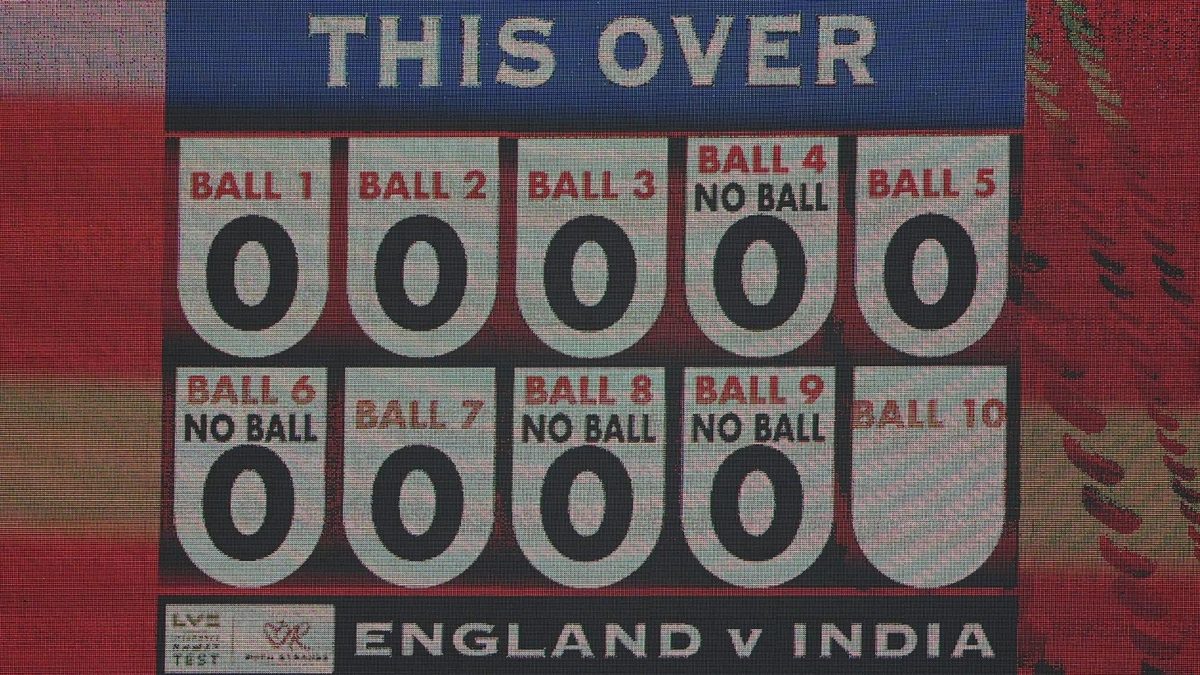
Cricket’s relationship with the short ball is tense, and overdue for a discussion of its overall merits.
Sign up to The Cricket Draft, powered by Wisden, an all-new, free-to-play fantasy game running alongside The Hundred, to win prizes and compete with your friends.
When bowling at a batsman just looking to survive the effectiveness of the bouncer is entirely down to the threat of injury. It’s an uncomfortable truth, and therefore one that is rarely acknowledged, but if a batsman knew he could be hit without fear of physical pain, he wouldn’t contort himself or thrust his gloves in the way to prevent the possibility. There are plenty of sports in which injuries are part of the deal, but few in which the aim of one side is, at times, explicitly to inflict harm on the opposition. A bowler will know that it’s part of the game, understand that they are just doing their job, apologise when a ball does find its target, and then go back to the top of their mark and bowl it short again.
Thorough concussion protocols and enhanced safety protections can’t solve the inherent awkwardness at the game’s heart, because sufficient safeguards would make aiming for the head no longer a viable strategy. An accurate spell of short-pitched fast bowling can be a brutal, visceral, thrilling thing, and cricket’s fans also ignore why it is so, and what the consequences can be. Some have speculated that, in time, it’s a delivery that will be outlawed completely. Others have decried that suggestion as lunacy.
There is provision for dealing with sustained dangerous bowling in the laws, but it is rarely, if ever, used at the top level. Law 41.6 dictates that the umpires disregard any protective equipment and consider whether a short-pitched delivery is likely to cause harm. But a bowler who knows a batsman is looking to survive will only bowl a bouncer if they think that that is the case, that there’s a chance of a misjudgement which, were it not for helmets or padded gloves, would break bones. The counter-argument is that players in international cricket should be equipped to handle anything thrown their way, that in the Test cauldron, anything goes. But again, it’s a feature almost unique to cricket that players are asked to perform tasks in which they might have no natural ability, as a specialist bowler often is.
Still, this isn’t the time for solving the bumper problem altogether, but instead to focus on the issue which Saturday evening’s barrage from Jasprit Bumrah highlighted, which is that, at times in Test cricket, a front-foot no ball can benefit the bowling side and be detrimental to the batting side. There is little suggestion that Bumrah was deliberately overstepping against Anderson, and it’s questionable whether the 10-ball over actually did benefit India. As Jonny Bairstow put it punchily and succinctly at stumps, “They all add to the total and our lead”.
But there are times when runs are properly immaterial. Consider, for example, a side batting fourth and looking to bat out the overs. Perhaps they are nine down, with the No.11 on strike, and one ball left to see out. In this case, a retired hurt is as good as a dismissal, and a deliberate over-step and a bouncer could be the thing that softens up a batsman for the full ball to follow.
Mike Selvey, formerly a Test fast bowler and the Guardian’s chief cricket correspondent explained how deliberate no-balls “used to happen all the time” and are “wrong of course”. Bert Vance, in New Zealand first-class cricket in 1990, provided one of the more obvious and comical examples of deliberately giving away extras.
Used to happen all the time. Go through the crease for a couple of balls as a softener knowing there are six to follow. It's wrong of course but this is not a new discussion. Bowlers should get a maximum of six chances per over to take a wicket. If one is a no ball then tough.
— Mike Selvey #StandWithUkraine (@selvecricket) August 15, 2021
There is a law against bowling deliberate no balls, with immediate suspension from the attack a strict punishment. And yet still it rankles that even an unintentional infringement could unquestionably benefit the bowling side. With no-balls now called off the field, the foot landing even a miniscule amount across the line will be pinged, so an accurate enough bowler could do so confident in being called, making intent even harder to figure out.
So a change is needed. The question is what, exactly. Any enhanced run penalty, as some have suggested, is unlikely to suffice, given that there are cases when no feasible run penalty will matter to a bowling side. Others have put forward the idea that the batting side can be given the option of receiving the extra delivery or not.
But the simplest solution would be to extend white-ball cricket’s free hit rule into the Test game. Then, in the case of Anderson last night, the England No.11 could simply choose to run away from the ball if he wished, a slightly farcical solution, but also a neat one. Doing so might feel sacrosanct, but it would also eradicate a discrepancy and therefore make transitioning between the formats easier for a new fan. We could even see one of the format’s famous momentum swings come about because of a battered freebie.








